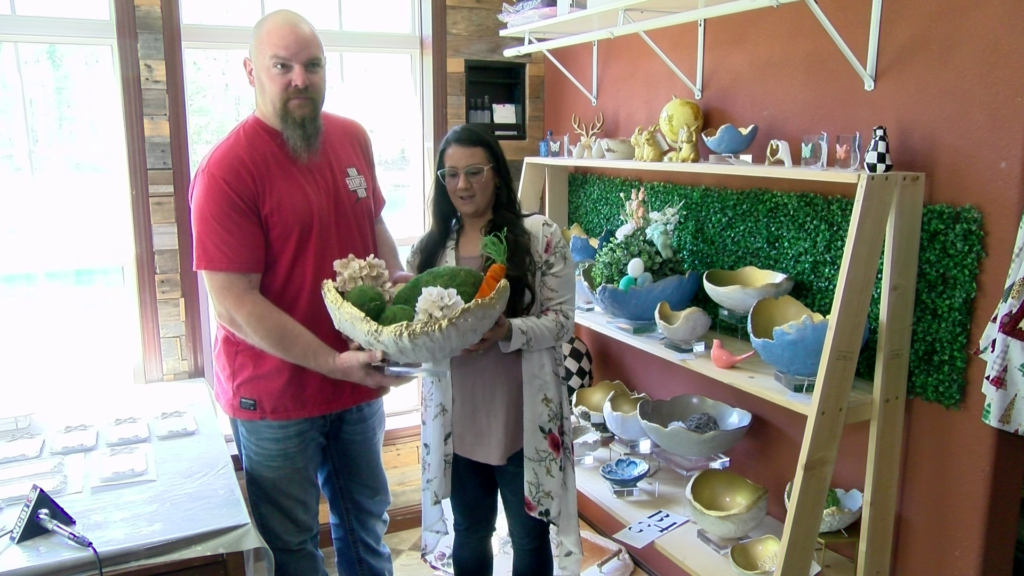Finding coronavirus' patient zero; and a guilty bat
Tracking down COVID-19‘s patient zero and how that person first contracted the coronavirus may take years, especially as U.S.-China relations tumble to a new low.
On Wednesday, Secretary of State Mike Pompeo said the details of patient zero are “in the possession of only the Chinese Communist Party.” Beijing denies any such cover-up. That heightened tension is complicating rather than helping researchers’ efforts to collaborate with Chinese scientists to find answers. The ongoing travel restrictions due to COVID-19 also make it impossible for Americans to do on-the-ground research.
U.S. medical experts tell CBS News the virus may actually have been circulating among humans for some time before the late 2019 Wuhan outbreak. The origin of the COVID-19 virus—SARS-CoV-2—could be determined by collecting blood samples from different parts of China that had been drawn and stored in the country prior to the winter of 2019, according to Dr. Ian Lipkin of Columbia University’s Center for Infection and Immunity, and then testing them for antibodies to see if the virus was present in another area before the devastating Wuhan outbreak.
At a minimum that would help to determine the evolution of the naturally-occurring virus which was able to jump species from animal to human and then adapt itself—as National Institutes of Health’s (NIH) Dr. Anthony Fauci put it—to a “high degree of efficiency in human transmissibility.”
In an interview with The Economic Club of Washington DC, Fauci said that this characteristic of the COVID-19 coronavirus sets it apart from the other coronaviruses that cause Severe Acute Respiratory Syndrome (SARS) and Middle East Respiratory Syndrome (MERS).
“I want to find out where it came from and find drugs to defeat it,” Dr. Lipkin told CBS News in a phone interview. Lipkin hopes to be able to collaborate with Chinese researchers to access local blood banks to determine if the virus was present anywhere from one to ten years ago. He had conducted similar research with the virus that caused MERS. But conducting such research takes time and access.
“If you start looking at haystacks, how quickly do you find the needle?” Lipkin said. “It is not easy to do this given that I cannot go back to China right now.” That is why, Lipkin argues, anyone who wants to find answers to these questions would need to work in cooperation with Chinese researchers and perhaps even China’s Ministry of Health.
At present none of those options seem to be available. China recently blocked the World Health Organization (W.H.O.) from participating in its investigation of the virus. The W.H.O. representative in China told Sky News last week that there was no good reason for its repeated requests to join the government investigation to have been declined.
Secretary Pompeo told reporters on Wednesday that Beijing continues to refuse to allow any access. “It’s not even that in the moment they couldn’t do the right thing; they continue to be opaque and they continue to deny access for this important information that our researchers, our epidemiologists need,” Pompeo said.
University-based researchers, like Dr. Lipkin, are hopeful that they may be a preferable alternative to a politically charged entity as the W.H.O. is at present. However, that still requires Beijing to be open to such collaboration on their part of its own scientists.
A number of U.S. labs with past and present ties to the Wuhan Institute of Virology have also fallen under US government scrutiny, with federal money pulled from at least one. Last month the NIH cut all future funding to New York based non-profit EcoHealth Alliance, a week after a reporter had pointed out to President Trump at coronavirus task force briefing on April 17 that the Wuhan lab had previously received U.S. funding via this project.
The non-profit’s director, disease ecologist Peter Daszak, had been studying bat-to-human transmission of coronaviruses in partnership for years with Chinese virologist Dr. Shi Zhengli, whose extensive work studying bat coronaviruses at the Wuhan Institute of Virology remains in the spotlight for the theory that the virus escaped from a Chinese lab. Daszak declined an interview with CBS News.
“The actions that our government has taken, including terminating Peter (Daszak)’s grant, means that we are not going to be part of any investigation. We’re out of it. It’s the most counterproductive thing that could have possibly been done,” Dr. Gerald Keusch of Boston University’s National Emerging Infectious Diseases Laboratories told CBS News. “It all comes down to people trusting one another sharing information. When those relationships exist, information gets transferred.”
Despite those complications, Dr. Lipkin argues that his approach of obtaining blood samples from blood banks would be a more effective way of answering the question of COVID-19’s origins than demanding the Chinese government hand over samples of the virus itself. Secretary Pompeo’s frequent public demands for international and particularly American investigators are politically embarrassing for Beijing, and have gone nowhere.
Secretary Pompeo has repeatedly said the U.S. needs access on the ground, and that he is particularly interested in the Wuhan Institute of Virology among other labs. The New York Times reported this week that agencies may have intercepted communications among Chinese officials raising questions with each other concerning the Wuhan lab. However, no U.S. official has publicly confirmed the existence of such conversations. Chinese officials could have been discussing such a possibility because of past experience with a lab accident in 2004 that infected lab workers.
Dr. Lipkin, who advised on the 2011 Hollywood movie ‘Contagion’, co-authored a report in the scientific journal Nature last month which laid out the case that COVID-19 had natural origins, ruling out the theory that the virus could be a man-made bio-weapon. When asked by CBS News about the possibility of a lab accident causing the naturally occurring virus to spill into the population, Lipkin said: “Is it possible that something like that can happen? Yes. But what is the evidence that it did?”
Dr. Fauci told National Geographic magazine this week that the question of whether the naturally occurring virus accidentally escaped from the Wuhan lab only buttressed the argument that it existed prior to any theoretical lab accident.
The only two certainties at this point are that the outbreak began in China, and that U.S. intelligence has concluded that it was not “man-made or genetically modified”. In an rare public statement last Thursday, the Office of the Director of National Intelligence (ODNI) said it will “rigorously examine emerging information and intelligence to determine whether the outbreak began through contact with infected animals or if it was the result of an accident at a laboratory in Wuhan.”
Secretary Pompeo has said both that there is “enormous evidence” that the outbreak originated from the lab, and that there is “no certainty” of the virus’ origins. No evidence has been publicly presented to substantiate any of the possible explanations, including a theory posed by the W.H.O. which has tied the first infections to the Huanan Seafood Wholesale Market in Wuhan.
Which species of bat first carried SARS-CoV-2 is also unclear.
“They talk about a certain kind of bat, but that bat wasn’t in that area,” Mr. Trump told reporters in April, referring to the wet market in Wuhan, “That bat wasn’t sold at that wet zone. It wasn’t sold there. That bat is 40 miles away. So a lot of strange things are happening, but there is a lot of investigation going on and we’re going to find out.”
Dr Lipkin said that the coronavirus “almost certainly” originated in horseshoe bats far from the disease outbreak in Hubei province. He explained that there could also be multiple potential explanations as to how the virus spread, particularly since it is believed to have had another animal host that facilitated its transfer to humans. A civet cat – for instance – was floated by Dr. Fauci as the animal that helped transfer the bat-borne virus to a human. Another early theory involved a pangolin—a scaly, endangered creature native to Asia that has been heavily trafficked on the black market.
Scientists also believe there are many mostly unknown bat-borne viruses. “I characterize the bat as the mosquito of the 21st century,” Dr. Keusch said to CBS News. “It has been responsible for major epidemics, in this case, a truly global pandemic.”
The Wuhan Institute’s Dr. Shi had in fact already discovered back in 2013—while hunting for the virus that had caused the 2003 SARS epidemic—the closest known virus to SARs-CoV-2, in a horseshoe bat in Yunnan, southern China, over a thousand miles away from Wuhan.
The similar viral strain, known as RATG13, shares 96% of its genome with SARS-CoV-2. But that 4% difference means the two are not closely related, as it amounts to a lot of genetic difference with regard to ancestry and evolution. Shi’s team published their knowledge of having a similar virus to SARS-CoV-2 in Nature in February this year, and Shi herself told Scientific American magazine in March that she had searched through her samples of viruses collected over the past few years and was relieved to confirm the 2019 coronavirus was not in her collection.
Dr. Chris Beyrer, an epidemiologist at the Johns Hopkins Bloomberg School of Public Health, told CBS News that the speed at which the 2019 coronavirus has spread likely indicates that it had time to circulate within the human population and adapt to become very good at human-to-human transmission before the first outbreak in Wuhan, raising even more questions over when, let alone where and how, the virus first jumped to humans.
“From the period of the first chains of human-to-human transmission it’s been very fast. How long it took to adapt to human populations, and under what circumstances that happened, is harder to say. It’s probably a matter of months, not weeks, because it’s such a transmissible virus,” Beyrer said.
“The other bat virus which continues to emerge in human populations is of course Ebola,” Beyrer also highlighted. “Ebola periodically erupts, and sometimes the outbreaks are very self-contained. Viruses, if their conditions for spread are met, will start to spread.”
“Could it be that there was a bat-to-human transmission somewhere else, and it just turned out that the density of this industrial city of Wuhan is where the eruption first appeared? That is theoretically possible,” Beyrer said.
But, he argues, human destruction of natural habitats and wild animals being brought from as far as beyond China’s borders to Chinese urban wet markets more likely helped the coronavirus find its way into humans. “I’ve spent time in Chinese industrial cities doing HIV work, and I’ve got to tell you: there’s no wildlife left there. China is completely deforested and degraded environmentally. These animals are coming from Southeast Asia and from their border regions. This is about wildlife trafficking.”
This list of unknowns suggests this scientific mystery could potentially keep epidemiologists and U.S. intelligence agents busy for years.
Like the U.S. and Australia, the UK and Germany also want to know where and how the virus originated, as well as who is responsible for failing to halt its spread sooner. But both European allies appear less pressing that this mystery be solved in the midst of a pandemic. China has not welcomed any of those proposals. The issue may well come to a head next week at the upcoming World Health Assembly in Geneva.
As for China, Dr. Lipkin argues, it is in Beijing’s interest to allow researchers to nail down the virus’ origins. “There is no downside to them if they prove that this thing originated in a cross-species event years earlier,” he said.





Leave a Reply